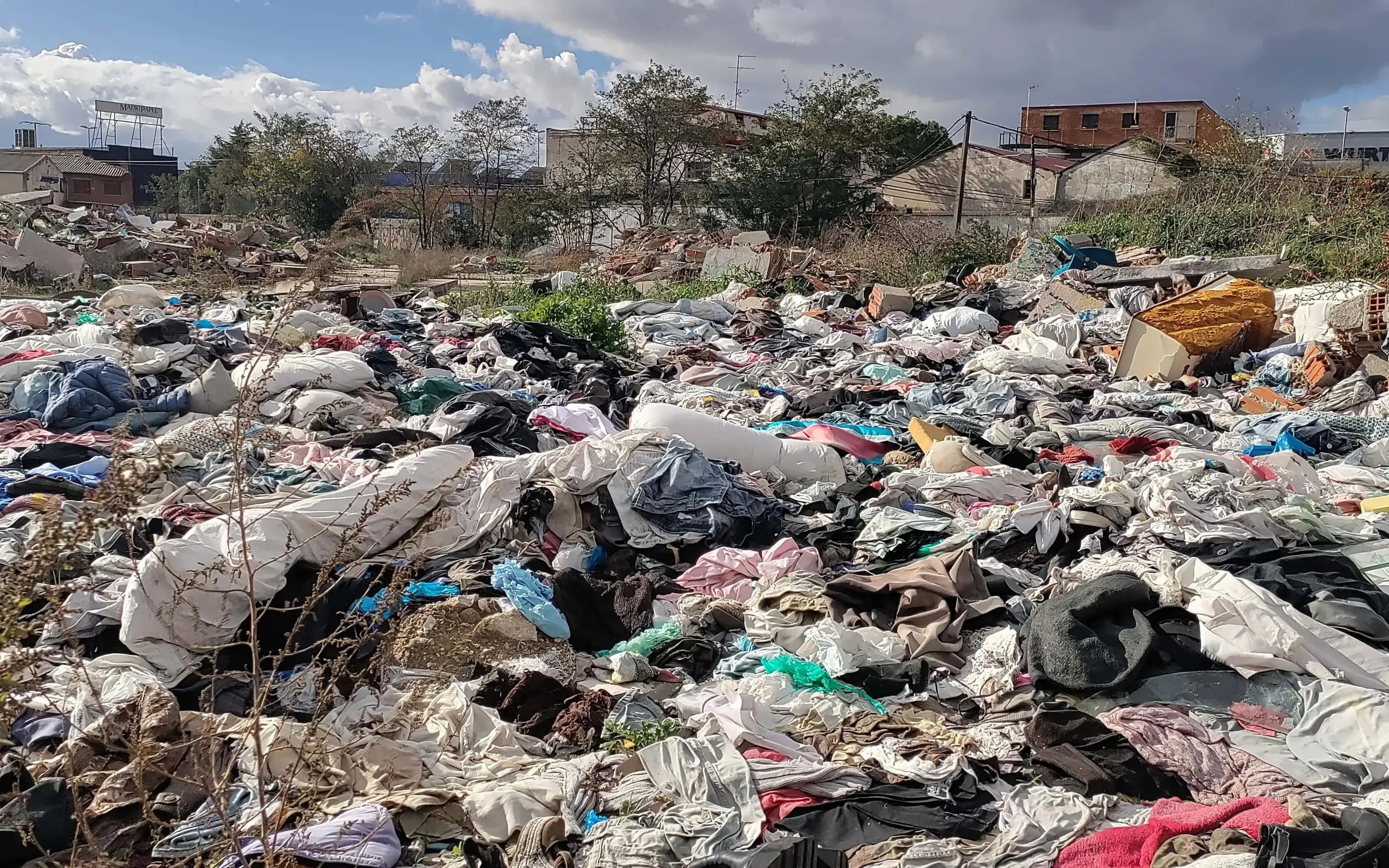
Many organizations and social movements have turned their attention to the textile industry and consumption models that generate negative impacts on the environment and labor conditions for many people.
According to the European Parliament, producing a single cotton T-shirt requires 2,700 liters of freshwater. Combined with the high levels of clothing consumption, the resulting pollution from the textile industry is staggering. Data collected by the European Environment Agency (EEA) reveals that “textile production generates between 15 and 35 tons of CO2 equivalent per ton of textiles produced.”
Additionally, other issues exacerbate the environmental impact of clothing production. In 2024, the EEA published a report stating that “between 4% and 9% of all textiles marketed in Europe are destroyed before use,” equating to “264,000 to 594,000 tons of textiles destroyed annually.”
Aware of this impact, the European Union and some countries have begun addressing the issue through regulations for better waste management. For instance, the EU has implemented a strategy for the circularity and sustainability of textile products. In Spain, Law 7/2022, dated April 8th, on waste and contaminated soils for a circular economy, includes the management and selective collection of textile waste by 2025.
Civil society often takes the lead, having carried out actions and campaigns in this area for years through social movements and organizations. This article highlights various initiatives combating textile pollution, promoting clothing reuse, and raising awareness about the environmental and social impact of the current textile consumption model.
Carro de Combate
This collective investigates the impact of consumption across various areas. Regarding the textile industry, it has launched the #ModaBasura project to explore “the socio-environmental impact of our frenzied clothing consumption.”
In collaboration with the Federación de Consumidores y Usuarios CECU, Carro de Combate published the report ‘Sombra aquí, sombra allá: Cómo la industria textil maquilla su imagen medioambiental’ (Shadow here, shadow there: How the textile industry whitewashes its environmental image). The report addresses greenwashing, a concept described as “communication or marketing strategies aimed at making us believe that the policies, products, or services of governments, companies, or organizations are environmentally friendly.”
Some examples of “environmental posturing” (a term used in the study) mentioned in the publication include labels and certifications that may come from the company itself or affiliated organizations the use of words and colors suggesting sustainability, such as stores with green tones and terms like “sustainable” the creation of collections that meet sustainability criteria but represent only a small fraction of the company’s total production campaigns for collecting second-hand clothing that, in many cases, do not lead to actual reuse.
Moda re-
An option carried out by several non-profit organizations is the sale of second-hand clothing through stores the goal, often, is not only to give garments a second life but also to create job opportunities for people at risk of social exclusion.
Moda re- is a social initiative cooperative promoted by Cáritas España and it manages the entire circular economy process “from collection and preparation for reuse to recycling, donation, and sale” with stores located across Spain.
Fashion Revolution
This international social movement, present in Spain and driven by volunteers, promotes transparency in the fashion industry and fights greenwashing through campaigns like #WhoMadeMyClothes. Fashion Revolution emerged after the 2013 collapse of the Rana Plaza building in Bangladesh, which killed thousands of workers. This event shed light on the inhumane working conditions faced by many workers globally.
The movement aims to raise awareness about the impact of the textile industry, focusing on fast fashion. It also highlights the rapid growth of the textile industry, driven by a consumption style favoring cheap clothing with quick turnover. This leads to significant pollution and perpetuates poor working conditions. In contrast, the movement advocates for alternative consumption styles like slow fashion, which emphasize environmental care and conscious consumption. Another suggested approach is upcycling, reusing old garments or fabrics with minor modifications to create new pieces.
Greenpeace Spain
This international organization has long worked to raise awareness of the waste generated by clothing production. In 2023, it conducted a study on reused clothing, tracking garments deposited in municipal containers and stores across Spain. The study revealed that some clothes were sent to international collection centers in other countries, while others fell outside local waste management systems.
Among Greenpeace’s initiatives, the organization focuses on events like Black Friday or seasonal sales, when clothes and other products are sold for a low price and ask: “What associated expenses are we not paying because others are bearing the cost?”
Back to Eco
This Barcelona-based organization specializes in textile recycling, particularly denim, creating new products and promoting the circular economy. One of its objectives is to “change the textile industry and create a cleaner, more conscious future.”
One of its key initiatives is Texans pel Clima (Jeans for the Climate), a project shared with organizations like Fundació Solidança and La taca d’oli/La Fàbrica. This process involves collecting and sorting denim clothing to create new pieces. Back to Eco focuses on denim due to its significant environmental impact: “Each pair of jeans requires approximately 1.5 meters of denim fabric and up to 8,000 liters of water", according to Texans pel Clima.






Add new comment